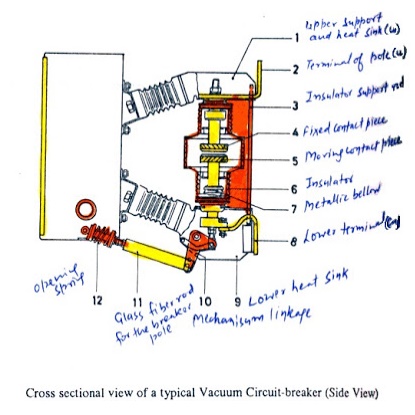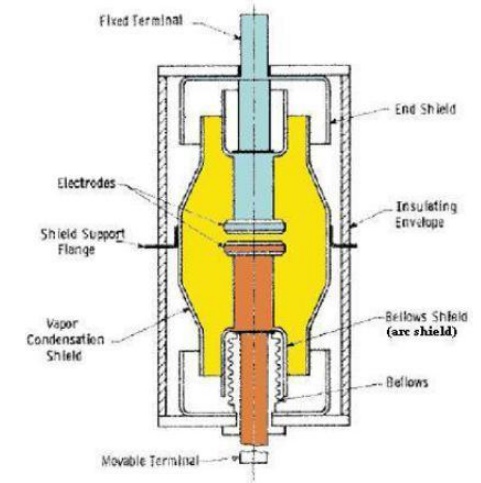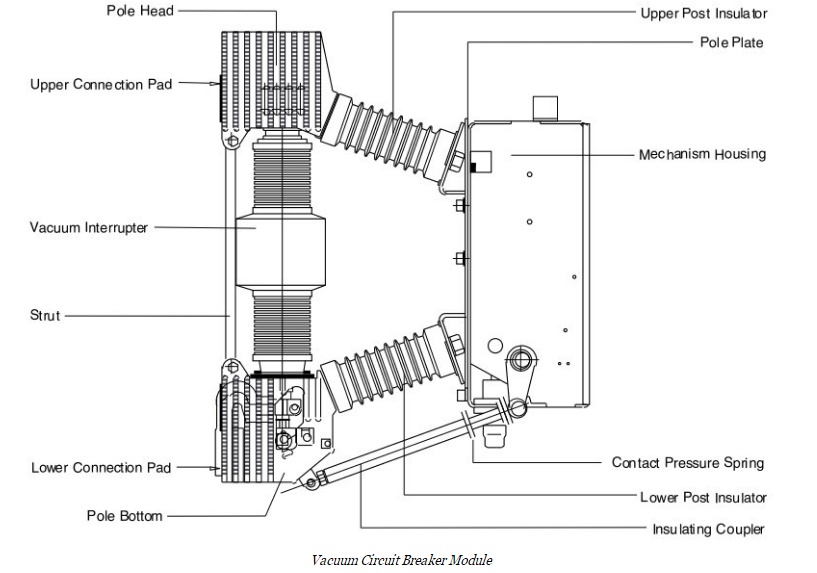vacuum circuit breakers
In this breaker, vacuum is being used as the arc quenching medium. Vacuum offers highest insulating strength, it has far superior arc quenching properties than any other medium. When contacts of a breaker are opened in vacuum, the interruption occurs at first current zero with dielectric strength between the contacts building up at a rate thousands of times that obtained with other circuit breakers. Principle: When the contacts of the breaker are opened in vacuum (10 -7 to 10 -5 torr), an arc is produced between the contacts by the ionization of metal vapours of contacts. The arc is quickly extinguished because the metallic vapours, electrons, and ions produced during arc condense quickly on the surfaces of the circuit breaker contacts, resulting in quick recovery of dielectric strength. As soon as the arc is produced in vacuum, it is quickly extinguished due to the fast rate of recovery of dielectric strength in vacuum

Construction:
Fig shows the parts of a typical vacuum circuit breaker. It consists of fixed contact, moving contact and arc shield mounted inside a vacuum chamber. The movable member is connected to the control mechanism by stainless steel bellows .This enables the permanent sealing of the vacuum chamber so as to eliminate the possibility of leak. A glass vessel or ceramic vessel is used as the outer insulating body. The arc shield prevents the deterioration of the internal dielectric strength by preventing metallic vapours falling on the inside surface of the outer insulating cover.

Working:
When the breaker operates the moving contacts separates from the fixed contacts and an arc is struck between the contacts. The production of arc is due to the ionization of metal ions and depends very much upon the material of contacts. The arc is quickly extinguished because the metallic vapours, electrons and ions produced during arc are diffused in short time and seized by the surfaces of moving and fixed members and shields. Since vacuum has very fast rate of recovery of dielectric strength, the arc extinction in a vacuum breaker occurs with a short contact separation.

Advantages:
· They are compact, reliable and have longer life.
· There are no fire hazards
· There is no generation of gas during and after operation
· They require little maintenance and are quiet in operation
· Can withstand lightning surges
· Low arc energy
· Low inertia and hence require smaller power for control mechanism.
Applications:
· For outdoor applications ranging from 22 kV to 66 kV. Suitable for majority of applications in rural area.

